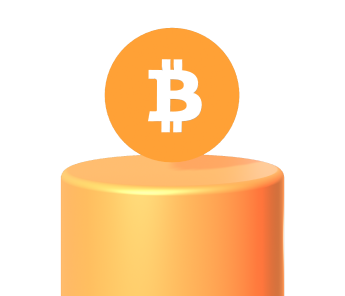How to mine Bitcoin? Years ago an ordinary computer was enough, and today?
How to mine Bitcoin? If you have known the crypto world for a while, you surely have asked yourself this question at least once. Mining is the process by which transactions are validated on Proof-of-Work blockchains, and thus also on Bitcoin‘s. Miners, through very complex calculations, create the network blocks and allow the network to function. And they receive rewards for their work.
Mining is also a competitive activity, as rewards are only given to the first miner to solve the mathematical problem. The amount of miners participating in the network influences the mining difficulty: a parameter that measures how difficult it is, on average, to validate a block. The difficulty also increases in relation to the power of the hardware.
Now that you are clear on the big picture, find out how to mine Bitcoin and why it is getting harder!
Bitcoin mining: what does it take?
The answer to the question ‘how to mine Bitcoin’ has varied a lot over time. If we had asked a miner in 2010 he would have answered “with a normal computer and mining software”.
The same question, in 2015, would have had a different answer. Back then, miners had already started using specially designed machines called ASICs (Application-Specific Integrated Circuits). And today? How do you mine Bitcoin in 2023?
- Hardware: in order to mine Bitcoin, it is necessary to start with hardware. From simple computers that were used years ago to sophisticated ASICs. There is a wide range of devices with which it has been possible to mine Bitcoin over time. Miners in the past used GPUs (video cards) because they had much more computing power than CPUs (processors) and were cheaper than ASICs.
GPUs used to be connected in series, i.e. one in a row, and by doing so, their computing power added up. Today, however, even this method has become obsolete and it is not possible to mine Bitcoin unless you have an ASIC.
- Software: an aspiring miner must obtain or develop ad hoc software. This point is even more complex than the previous one because it requires, in most cases, a high degree of computer knowledge. Some mining devices already have software installed inside them to be configured, but in most cases, the ‘command prompt’ or ‘terminal’ must be used to activate them. That is, the black screen in which to write code that anyone who is not a computer scientist ‘accidentally’ opens on their computer from time to time.
- Crypto wallet: The last thing a miner must have is the crypto wallet on which to receive rewards for validated blocks. A user who is in the process of building their own mining business should definitely not neglect this point if they do not want to work for free! This is definitely the easiest part of the whole process. Usually miners, like crypto enthusiasts, prefer to use hardware wallets, which are more difficult to hack since they are not constantly connected to the network.
Mining is also a team game
To be able to compete with the large mining companies that have many ASICs synchronised with each other, the ‘smaller’ miners have learnt to play as a team. Thus, mining pools were born, organisations that enable them to coordinate and work together to find the correct hash in the shortest possible time. Thus, you can try to mine Bitcoin even if you only have one device; by participating in pools and sharing the prize with other participants. Unfortunately, however, it is not possible to know for sure whether or not you will be able to mine any blocks, and you need to buy at least one ASIC to be admitted to a mining pool.
Mining is increasingly difficult
The hardware that can solve the very difficult calculations and the large amount of electricity required to run them makes mining a very expensive business. Moreover, the difficulty grows over time as it tends to adapt to changes in the hashrate, i.e. the total computing power of the network. The latter takes into account the hardware and software characteristics of all the miners that are connected to the BTC network and is updated every fortnight. It is however positive that mining Bitcoin is becoming increasingly difficult, the more miners participate in block validation the more secure the blockchain is.
Now that you know how to mine Bitcoin it is up to you to decide whether to start. However, if you have read this article carefully you may have realised that the game is probably not worth it (anymore). Unless you have access to a large amount of cheap electricity. There are, however, other less expensive ways to secure blockchains and obtain rewards, such as opening a node on a Proof-of-Stake network. You can take a cue from former Ethereum miners who have reinvented themselves since their blockchain changed consensus mechanism.


